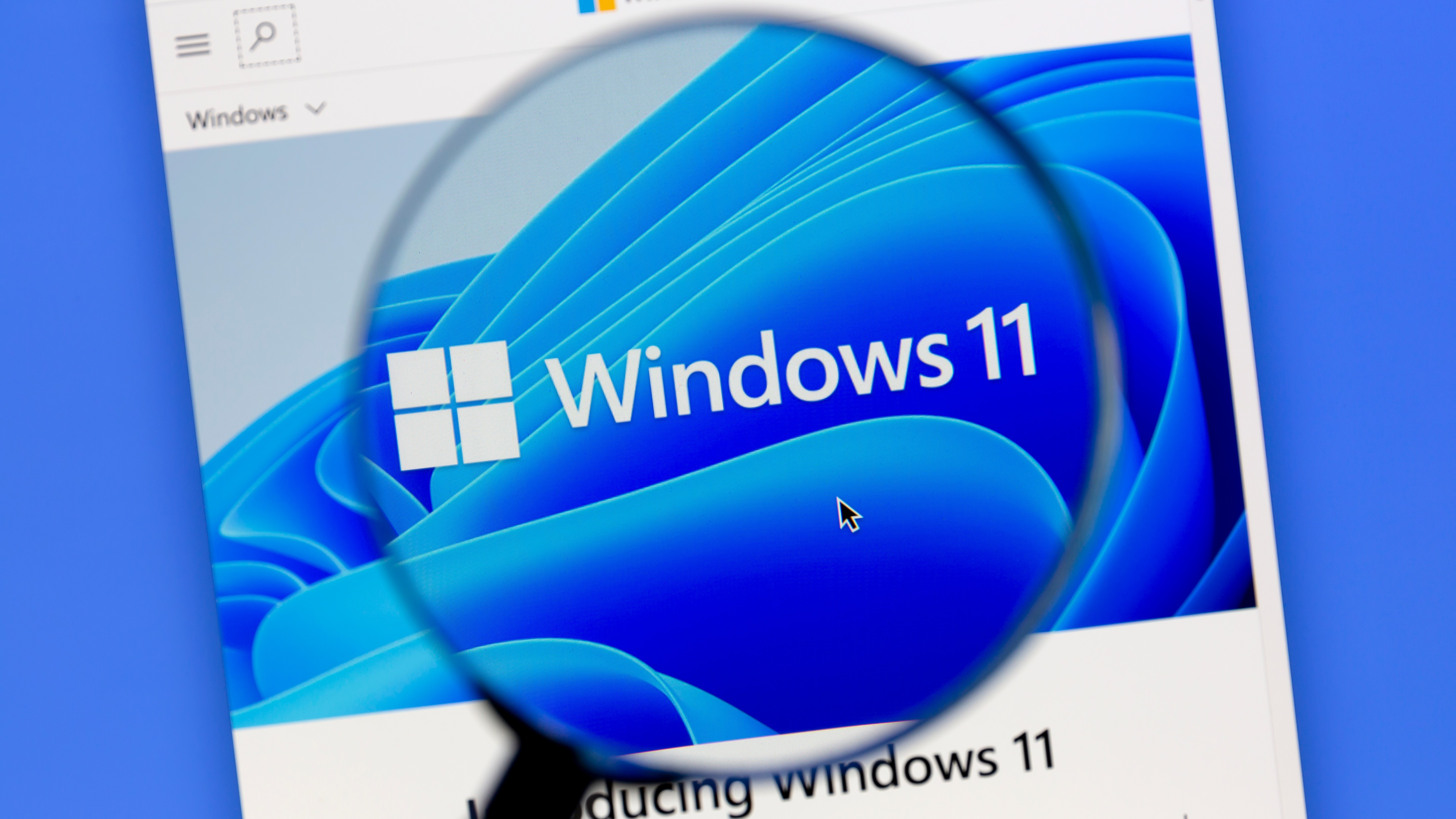
If your Windows 11 PC is lagging or taking a while to perform tasks that should be almost instant, you may be wondering how to speed up your Windows 11 laptop or desktop computer.
Windows 11 is Microsoft's latest operating system, but it can still be prone to the slowdowns that have plagued Windows computers for decades. Fortunately, with some simple housekeeping and maintenance, you can make Windows 11 run fast — just as it was intended to do.
If you upgraded to Windows 11 from an older version of Windows, chances are your computer contains a bunch of temporary files and unused programs that are putting a strain on your machine. There may also be older or missing drivers that need to be updated. Even machines that come with Windows 11 can get bogged down over time.
But don’t worry — there are plenty of things you can do to speed up your Windows 11 laptop or desktop, just by tweaking a few things here and there. Just bear in mind that a lot of traditional Control Panel features can now be found on the Settings app.
This is as simple as it sounds, and you don't necessarily need to install more RAM or an SSD make your computer go faster. So, follow this guide to find out how to speed up your Windows 11 PC — and if you're still on the previous OS, we also have a guide to how to speed up Windows 10. In case you have a Mac, you can look at our guide on how to speed up your Mac as well.
How to speed up Windows 11: Restart your device
Many of us are guilty of leaving our computers in "sleep" or "standby" mode for weeks, or even months, on end. But restarting your computer every now and then is one of the simplest ways to speed up Windows 11.
Restarting your Windows 11 computer is a way for it to refresh itself and close down anything that doesn't need to be running. It may also fix a number of technical issues you may be experiencing, as restarting your computer also resets the underlying processes and drivers that are essential for the system to run smoothly.
Sign up to get the BEST of Tom's Guide direct to your inbox.
Get instant access to breaking news, the hottest reviews, great deals and helpful tips.
There's a reason "Did you try restarting it?" is usually one of the first questions IT techs ask — it's like a silver bullet for computer problems, even if you're using one of the best laptops.
1. To restart Windows, simply click the Windows icon on your taskbar (or press the Windows key on your keyboard) then click the "power" icon. Next, click the "restart" icon.
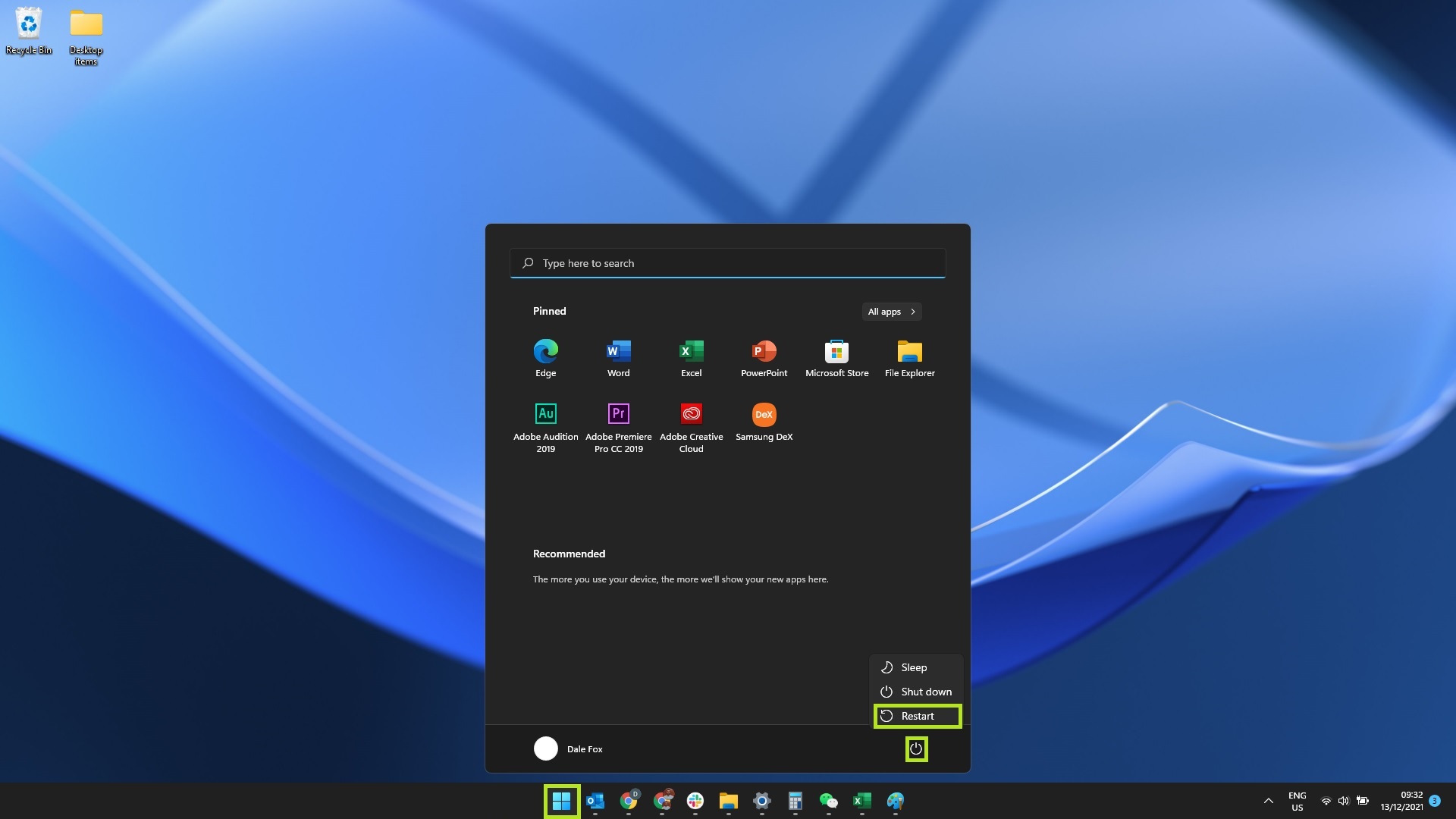
How to speed up Windows 11: Update your system
It may seem like Windows 11 is constantly asking you to update, but there's a good reason for that: Windows updates often contain a lot of bug fixes and driver updates, and they also refresh the operating system's built-in anti-virus software. So, even though it may cause a few moments of inconvenience, updating is always a wise choice.
Here's how to update your Windows 11 PC:
1. Click the Windows icon on your taskbar (or press the Windows key on your keyboard) to open the Start menu. Type "updates" — this will bring up the option "Check for updates" in the Start menu. Click "Check for updates."
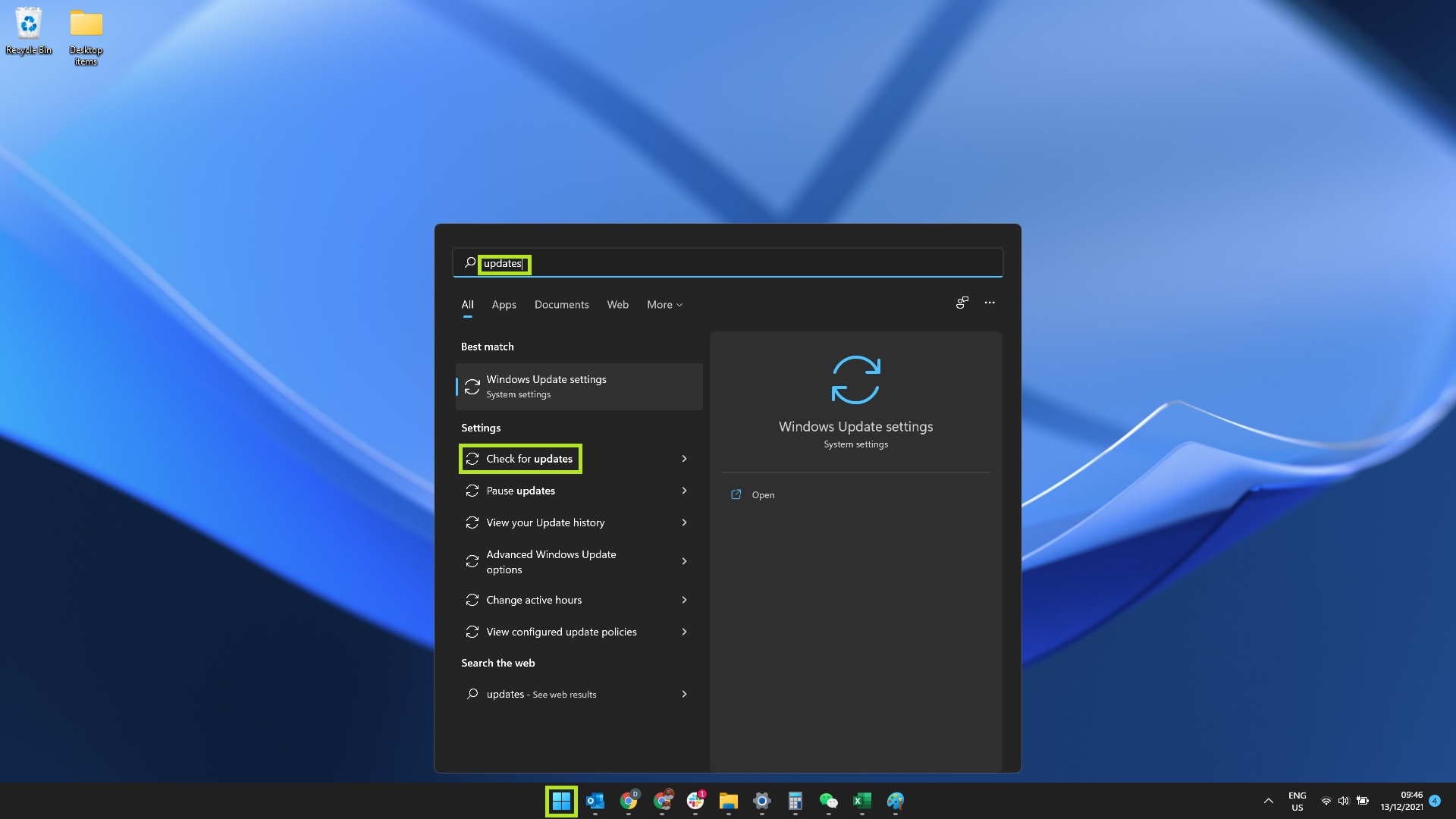
2. Now you're in the Windows Update menu, click "Check for updates." Windows should automatically begin downloading any available updates.
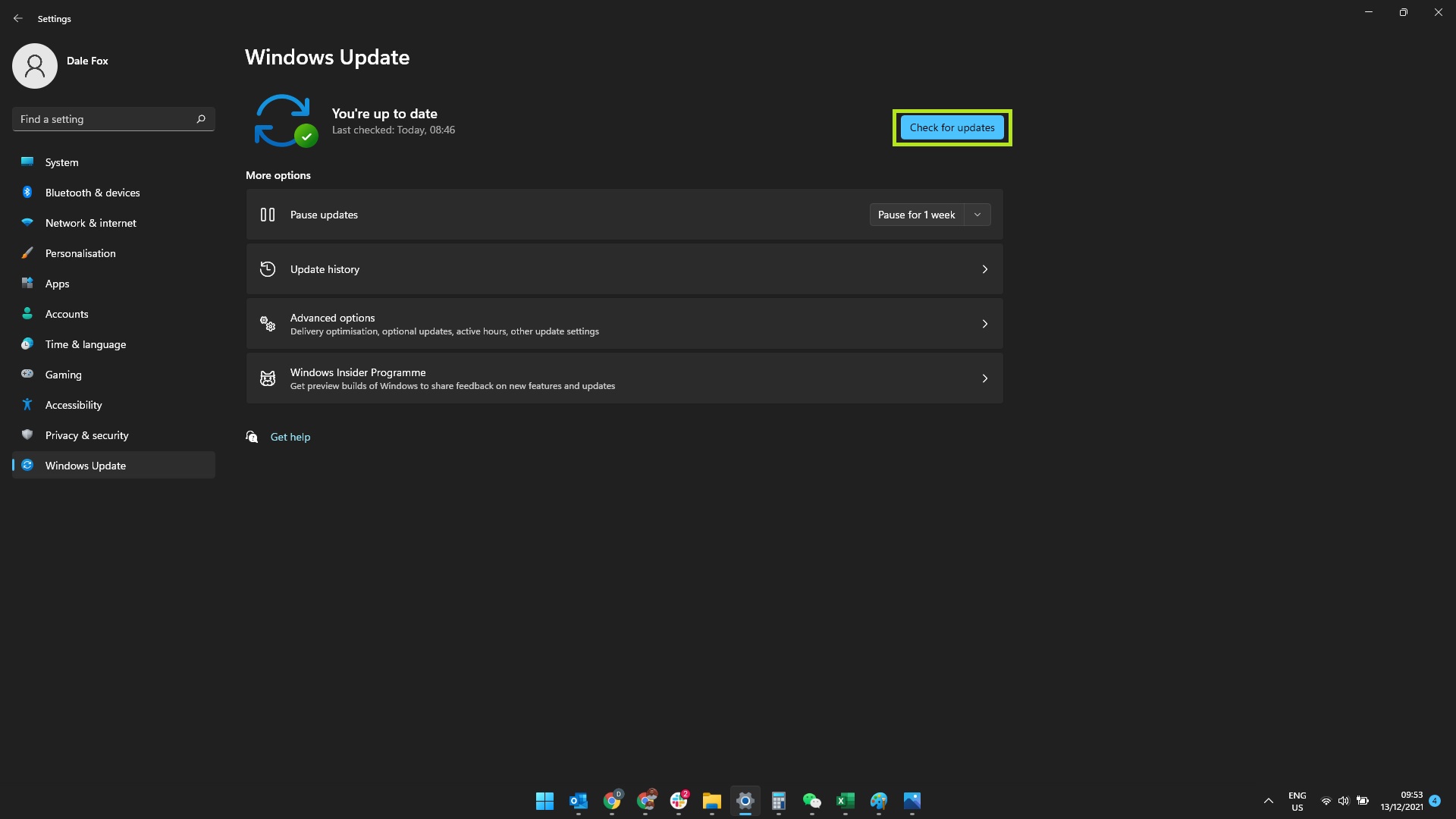
3. Once your updates are finished downloading, click "Restart now" to immediately install them. Alternatively, click "schedule the restart" to choose a more convenient time to restart your computer. Not all updates require a restart, so you may not see these options every time.
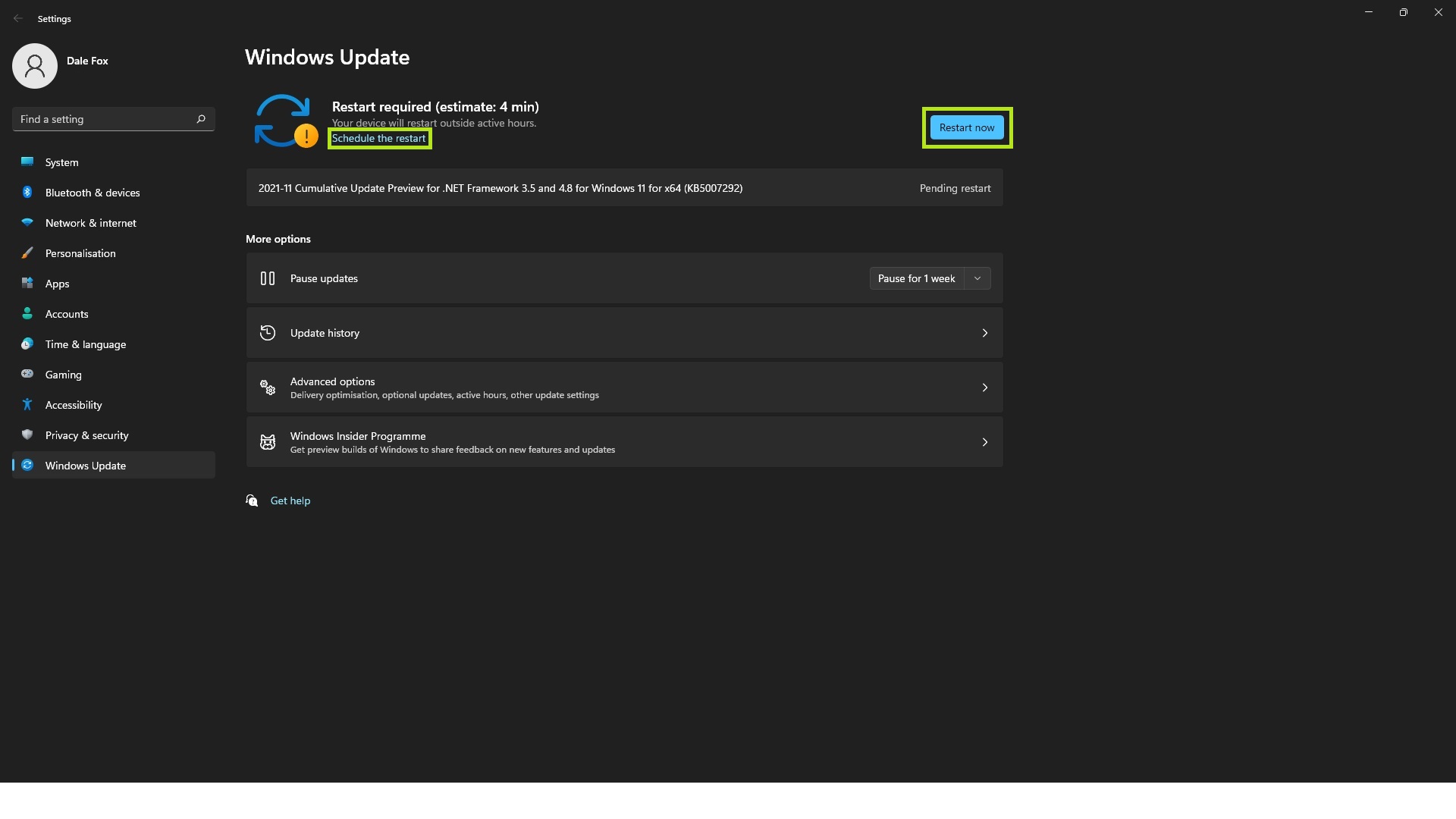
How to speed up Windows 11: Disable apps from running automatically
Having too many apps opening automatically when you start or restart your Windows PC can cause it to be slow from the get-go. You may not even realize that apps are starting themselves up in the background when you power on your PC. To fix this, follow this guide on how to disable startup apps on Windows 11.
1. Click the Windows icon on your taskbar (or press the Windows key on your keyboard) then type "startup." This should bring up the option "Startup Apps" in the Start menu. Click "Startup Apps" to enter this setting.
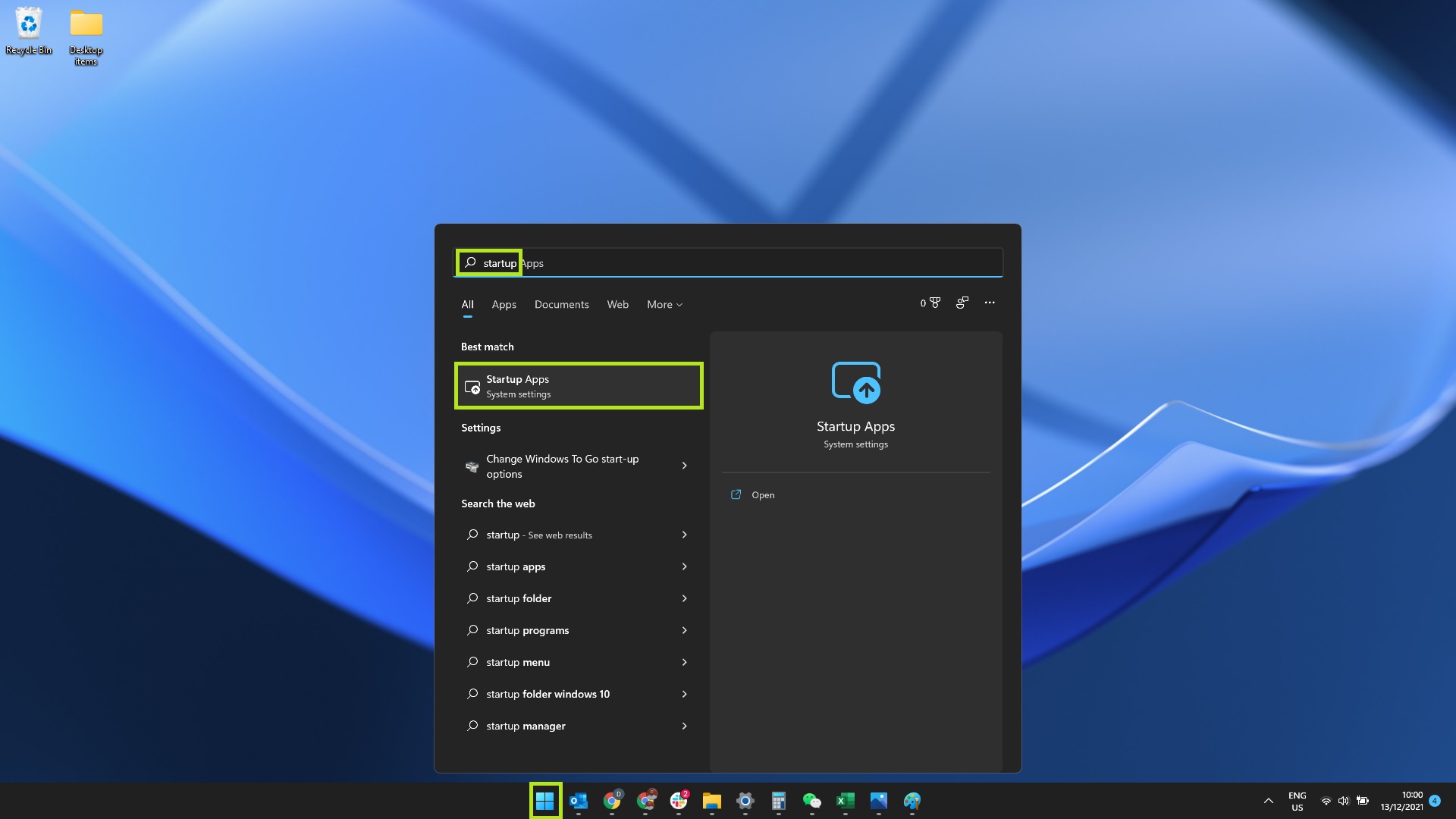
2. You'll now see a list of all the apps that have the option to start automatically when you sign into Windows. To the right of each app that is set to start automatically will be a toggle saying "On," as well as a note to the right which describes the impact this has on your system — low, medium, or high. Any apps that are set to "Off" will say "No impact" by them.
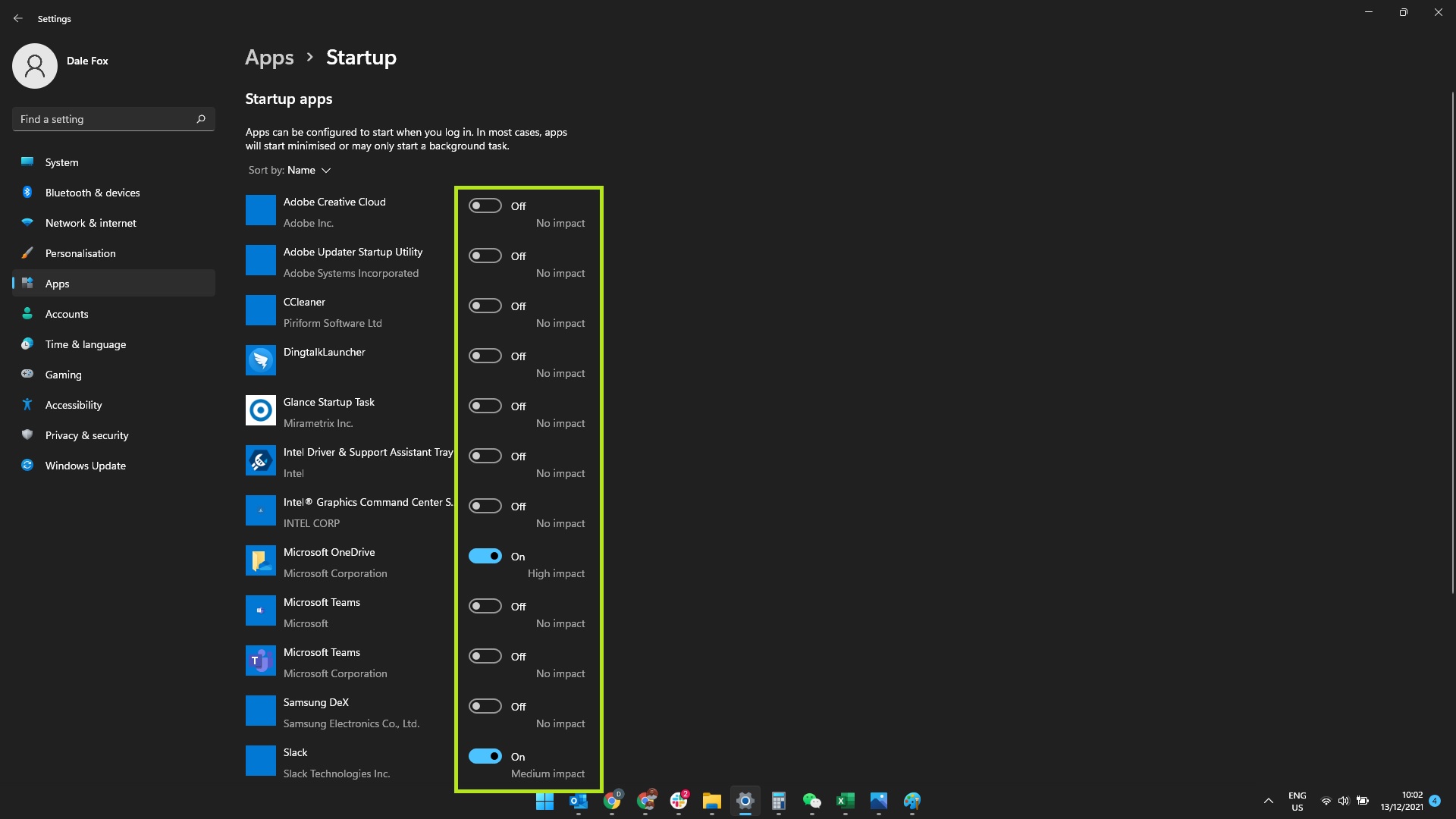
3. To stop an app from starting automatically when you sign into Windows, click the "On" toggle next to it. It's recommended to do this with any apps that say "Medium impact" or "High impact" next to them. You could also do this with "Low impact" apps if you rarely use them.
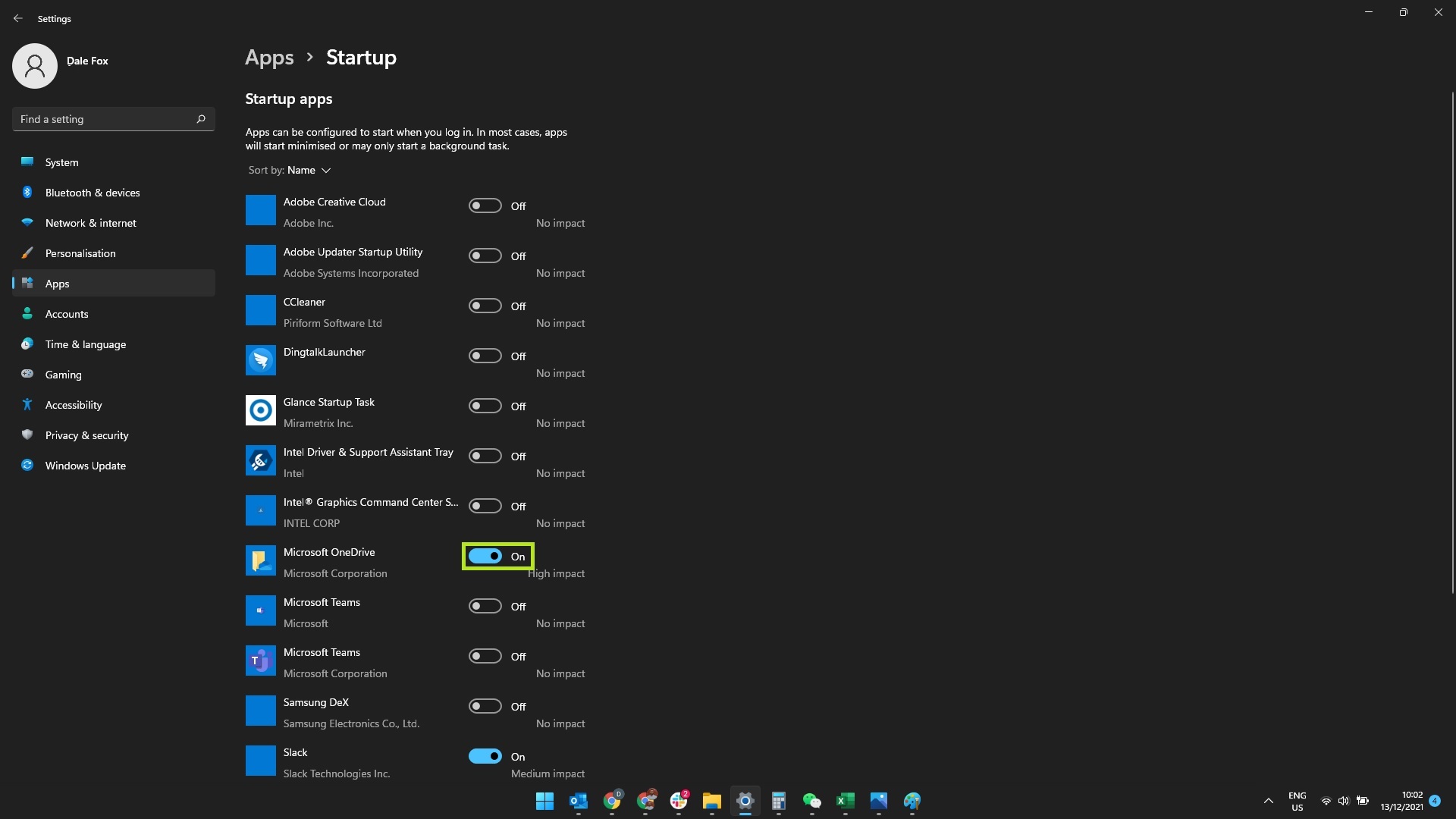
Don't worry about disabling any of the apps in this menu. They'll still work as normal when you need them — you're simply stopping them from opening by themselves and running in the background unnecessarily when your computer starts up.
How to speed up Windows 11: Free up storage space
Windows 11 has a handy built-in tool to free up space on your computer. If you're running out of storage space, the Storage tool can be a quick way to remedy this — and potentially speed up Windows 11 at the same time. Here's how to free up storage space on Windows 11 using the Storage tool.
1. Click the Windows icon on your taskbar (or press the Windows key on your keyboard) to open the Start menu. Type "storage" until you see the "Storage settings" option appear, then click it.
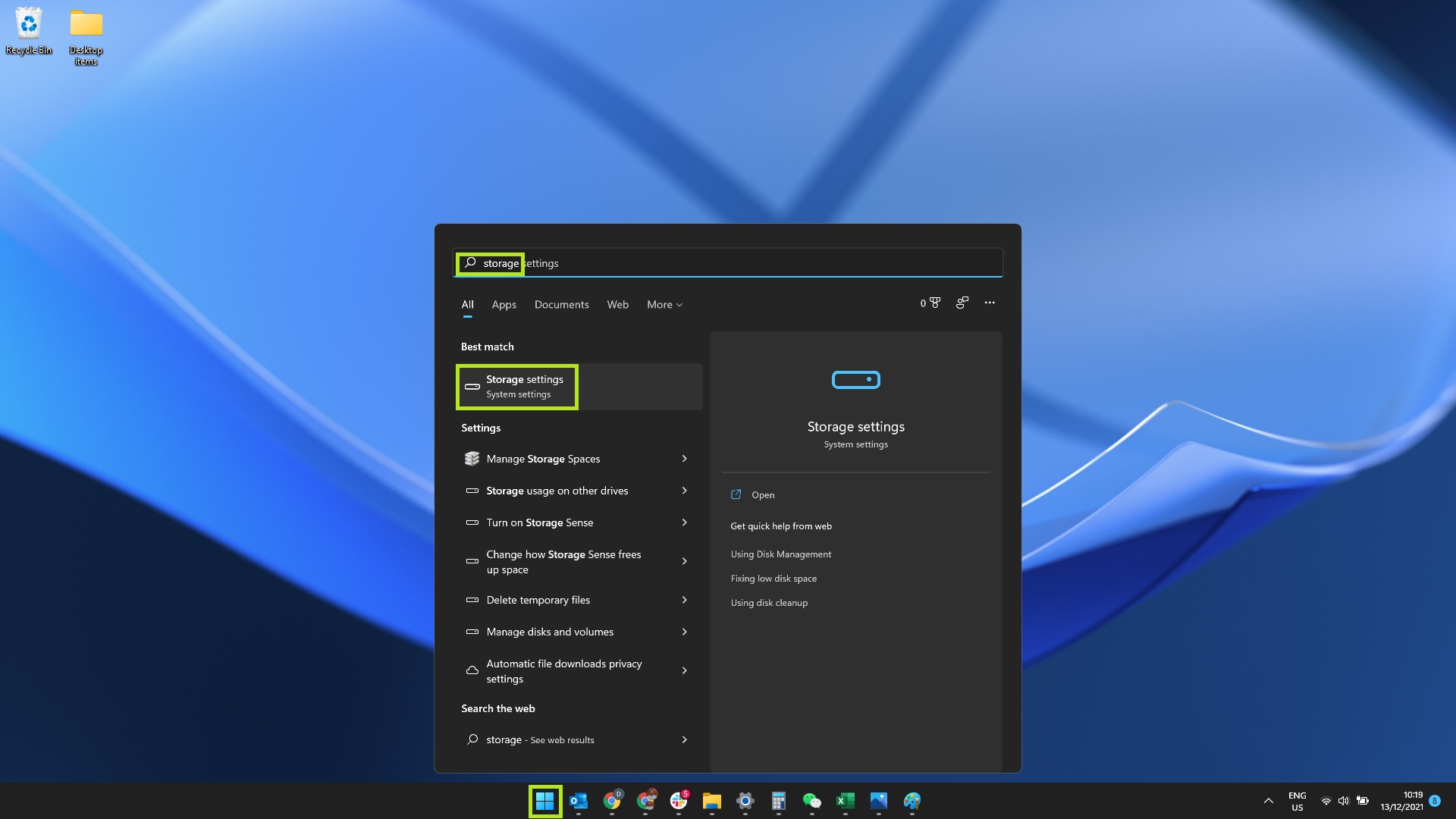
2. You'll now see a list of the top five categories where most of your storage is being used on your main drive. For now, we'll focus on "Temporary files," as they're usually the least important files on your system. To get started, click "Temporary files."
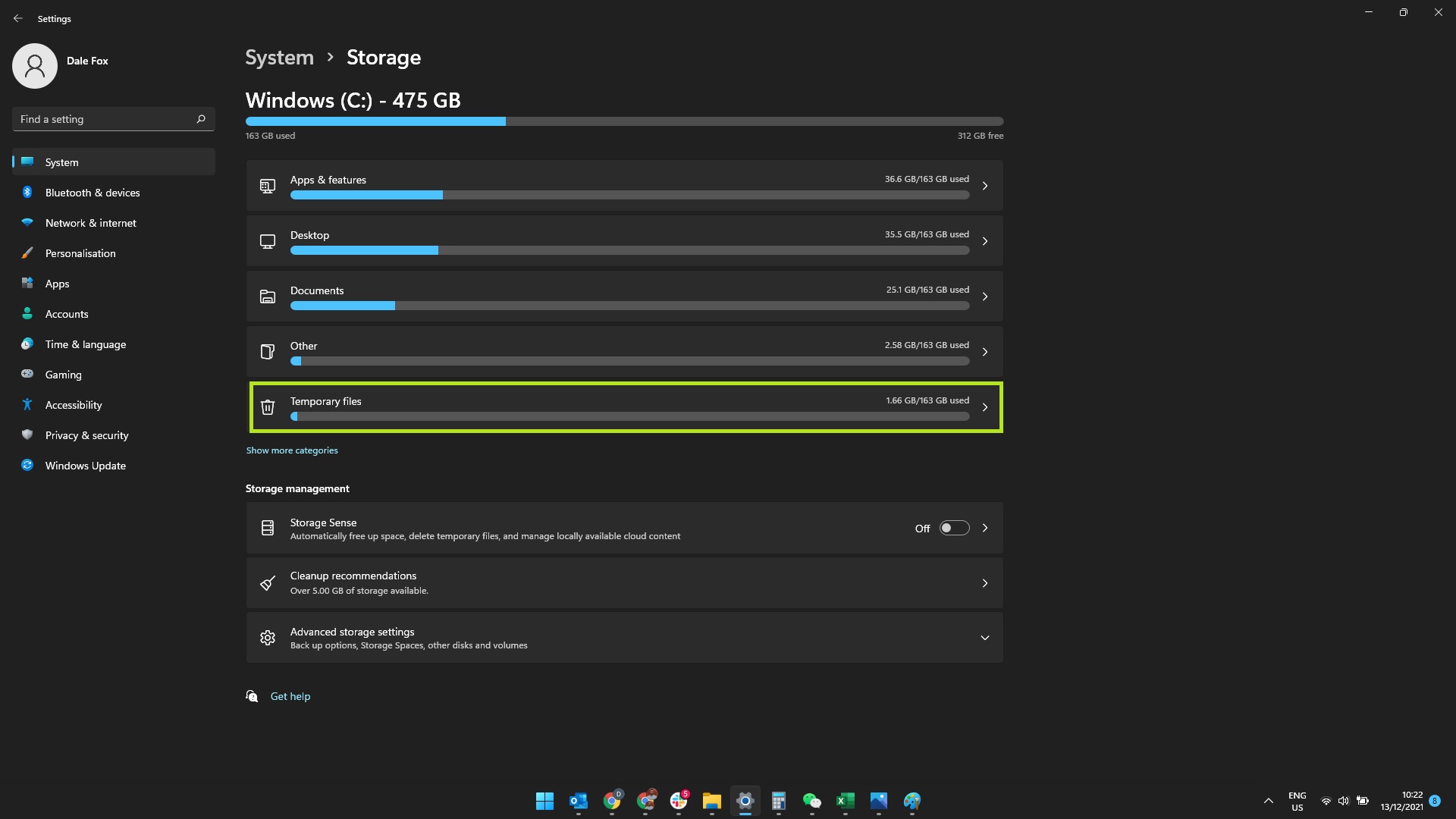
3. You'll now see a list of file types that Windows 11 has selected automatically. You may safely also select "Recycle Bin," "System error memory dump files" and "Delivery Optimization Files" to free up even more space — however, check your Recycle Bin on the desktop first to check there's nothing important in there before you empty it. It's not recommended to delete any of the other files in this menu.
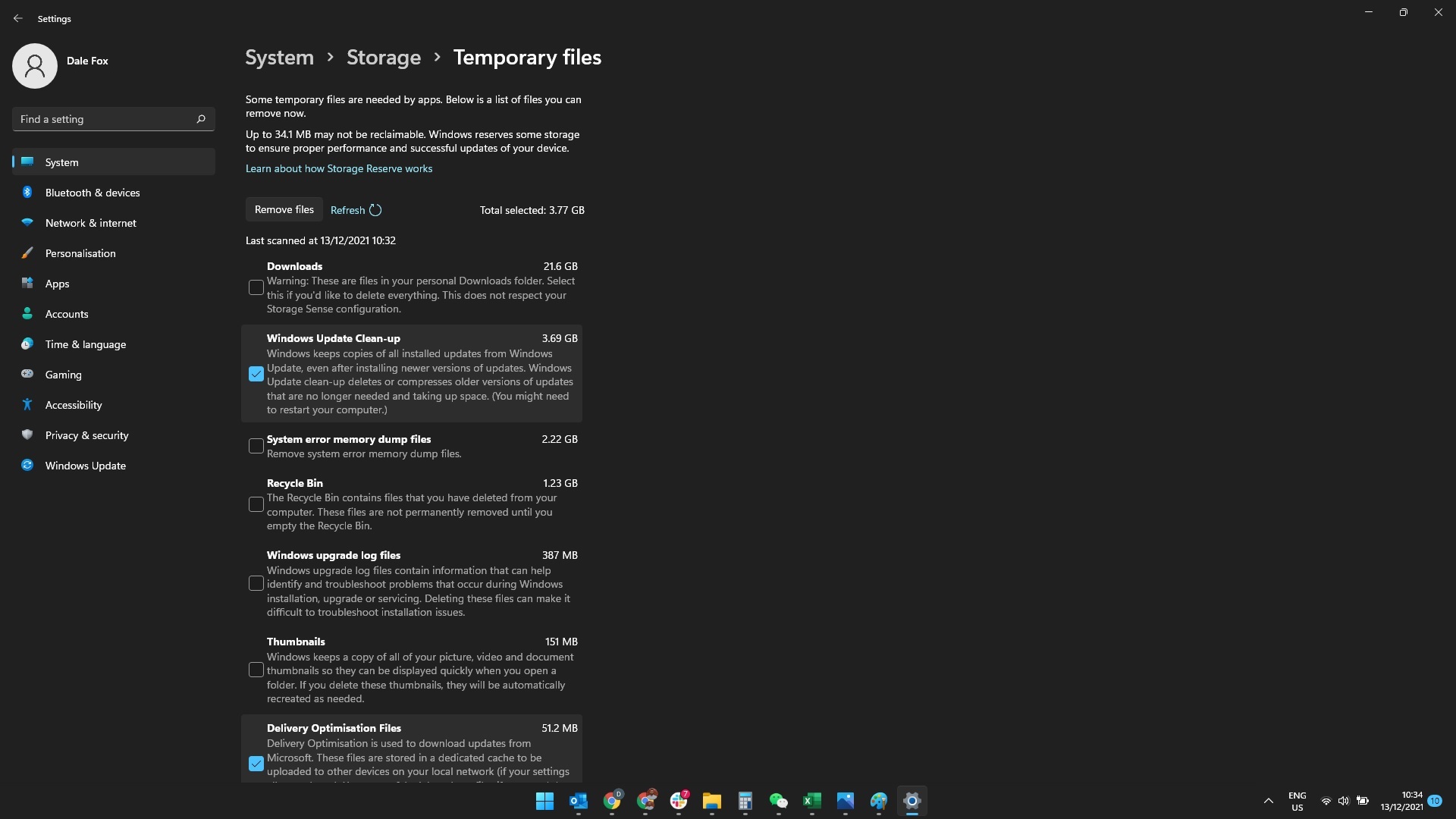
4. To delete the selected file categories, click "Remove files" at the top of the page. Click "Continue" on the prompt to confirm.

If you have more than one drive on your Windows 11 PC, you can clear up some space on the other drive, or drives, too. To do this, go back to the main Storage page, then click "Advanced storage settings." Then, click "Storage used on other drives."
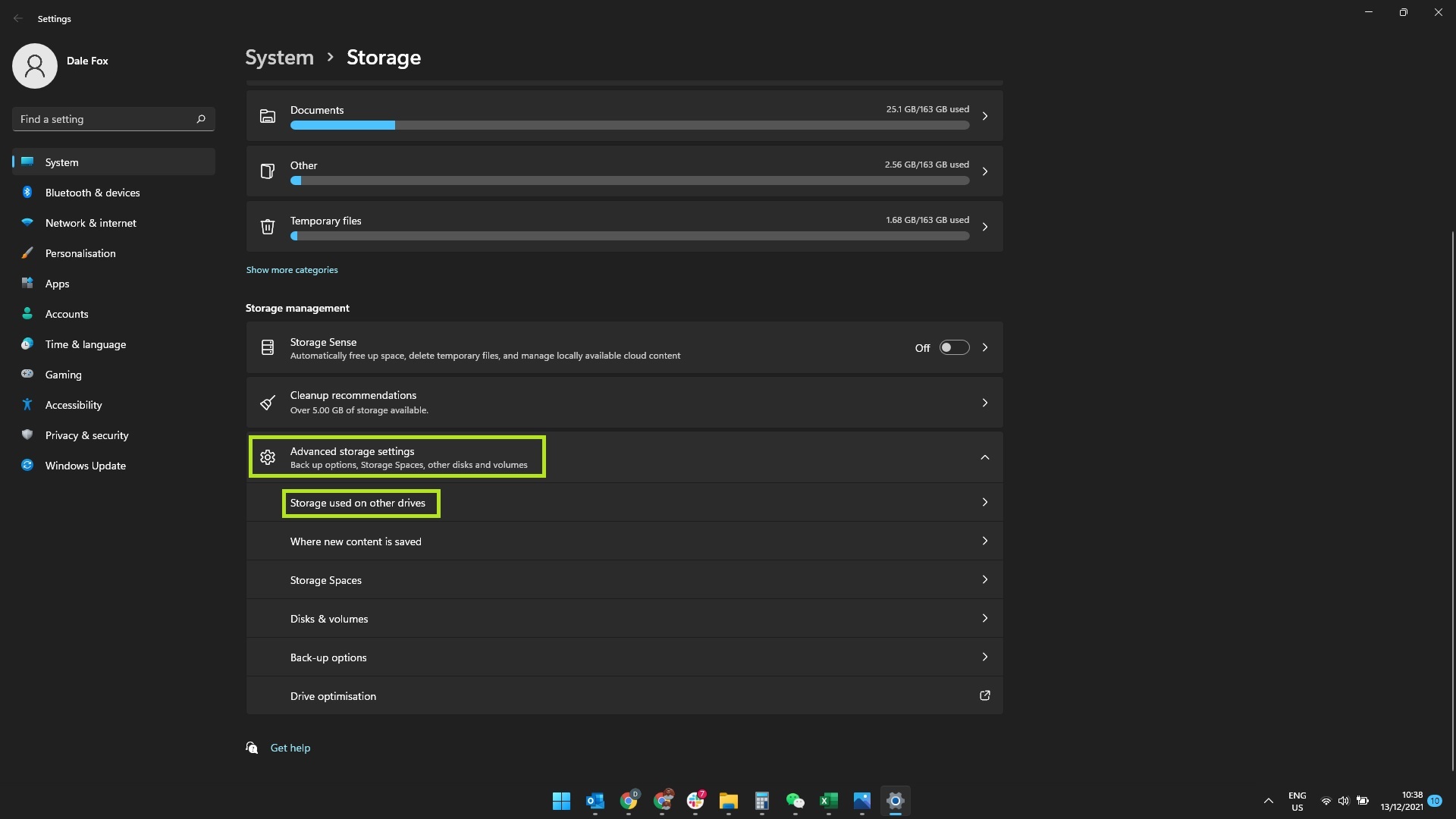
You'll now see a list of every drive on your computer. Click the one you want to clean up.
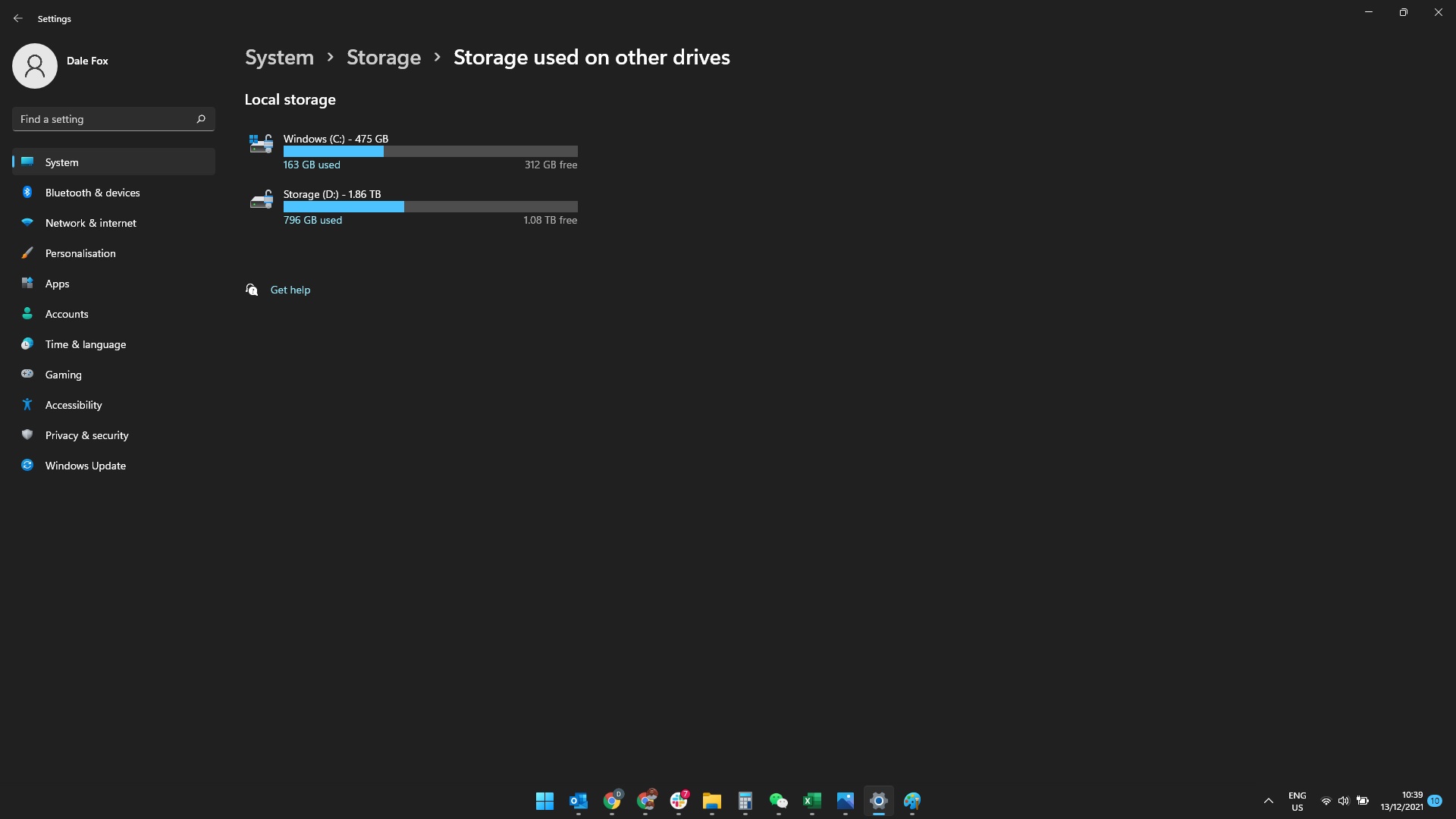
You'll notice that Windows hasn't pre-selected any file categories like it does for your main drive. With this in mind, you must be careful not to select any important categories, such as "Photos" or "Videos," as you may delete valuable files by mistake. To be safe, it's recommended to only choose "Temporary files."
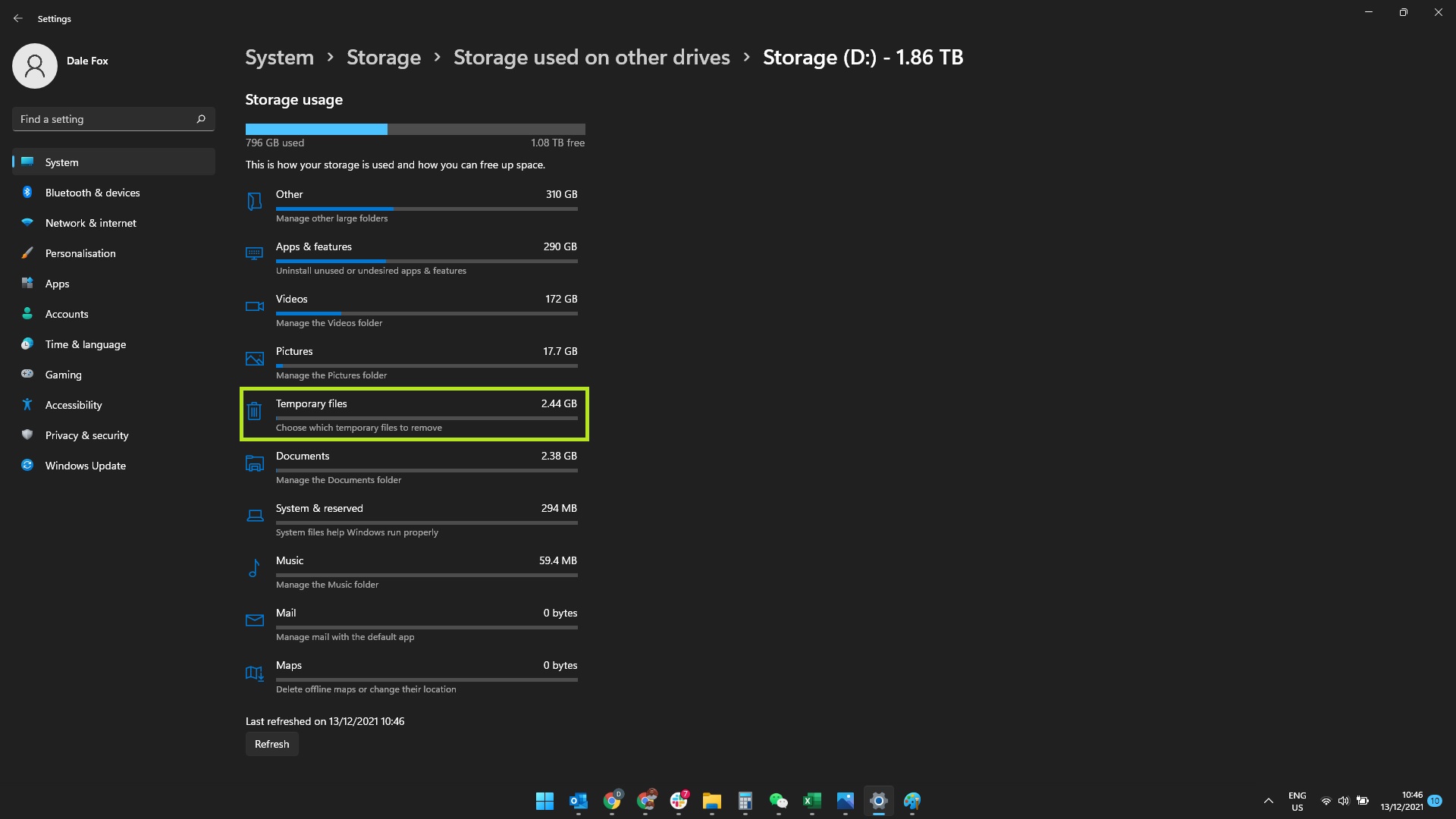
After clicking "Temporary files," you should see the categories of files that can be deleted. With secondary drives, you're most likely to only see "Recycle Bin," which is safe to delete — just check through your Recycling Bin first before deleting anything.
To empty your Recycling Bin on your secondary drive, simply click the checkbox next to "Recycling Bin," click "Remove files," then confirm by clicking "Continue" on the prompt.
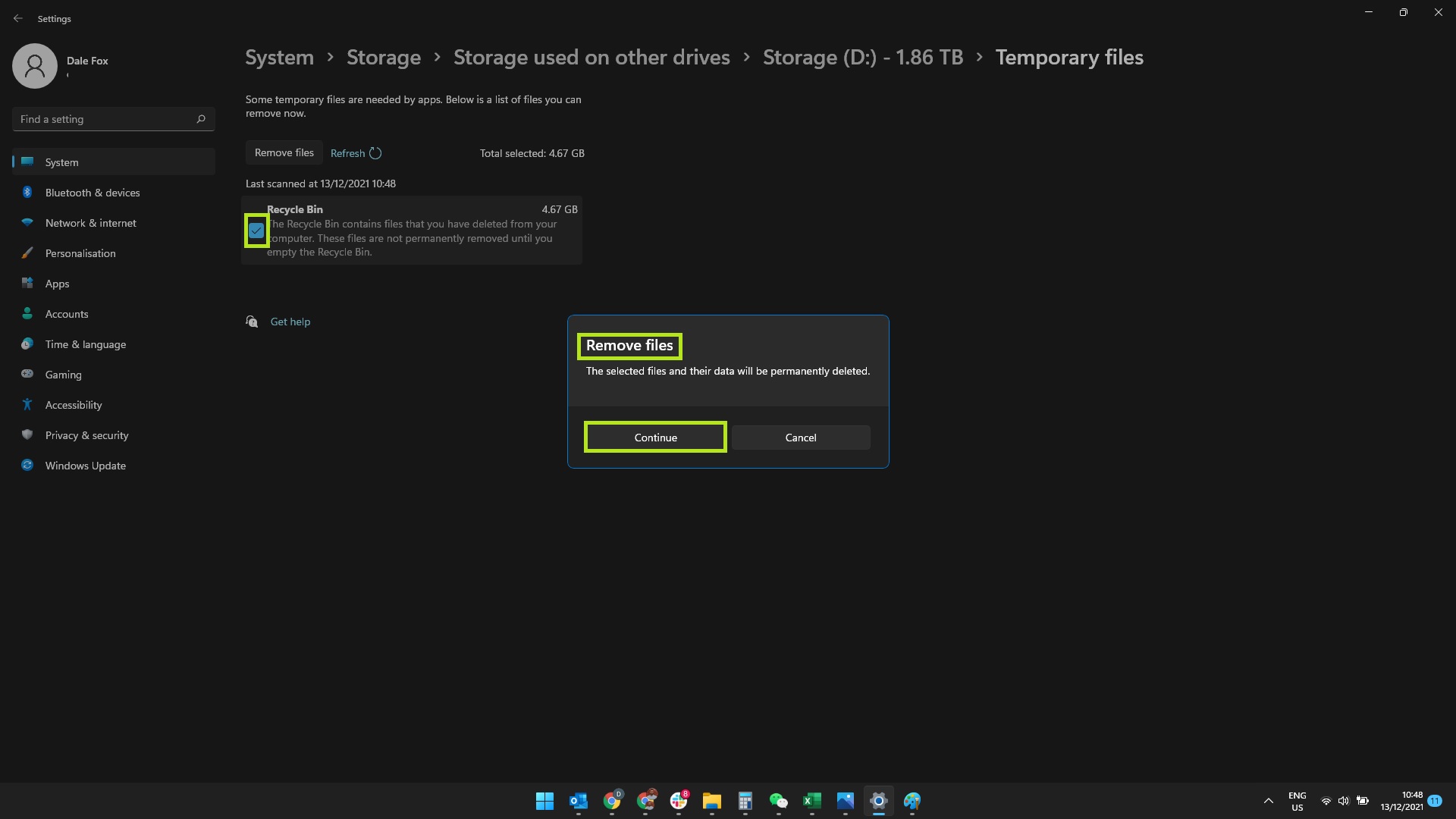
How to speed up Windows 11: Uninstall unused apps
The Windows 11 storage tool can also be used to uninstall any apps you don't need, freeing up more storage space and potentially speeding up your computer. Here's how to uninstall unused apps on Windows 11 using the Storage tool.
1. Click the Windows icon on your taskbar (or press the Windows key on your keyboard) to open the Start menu. Type "storage" until you see the "Storage settings" option appear, then click it.

2. Click "Apps & features."
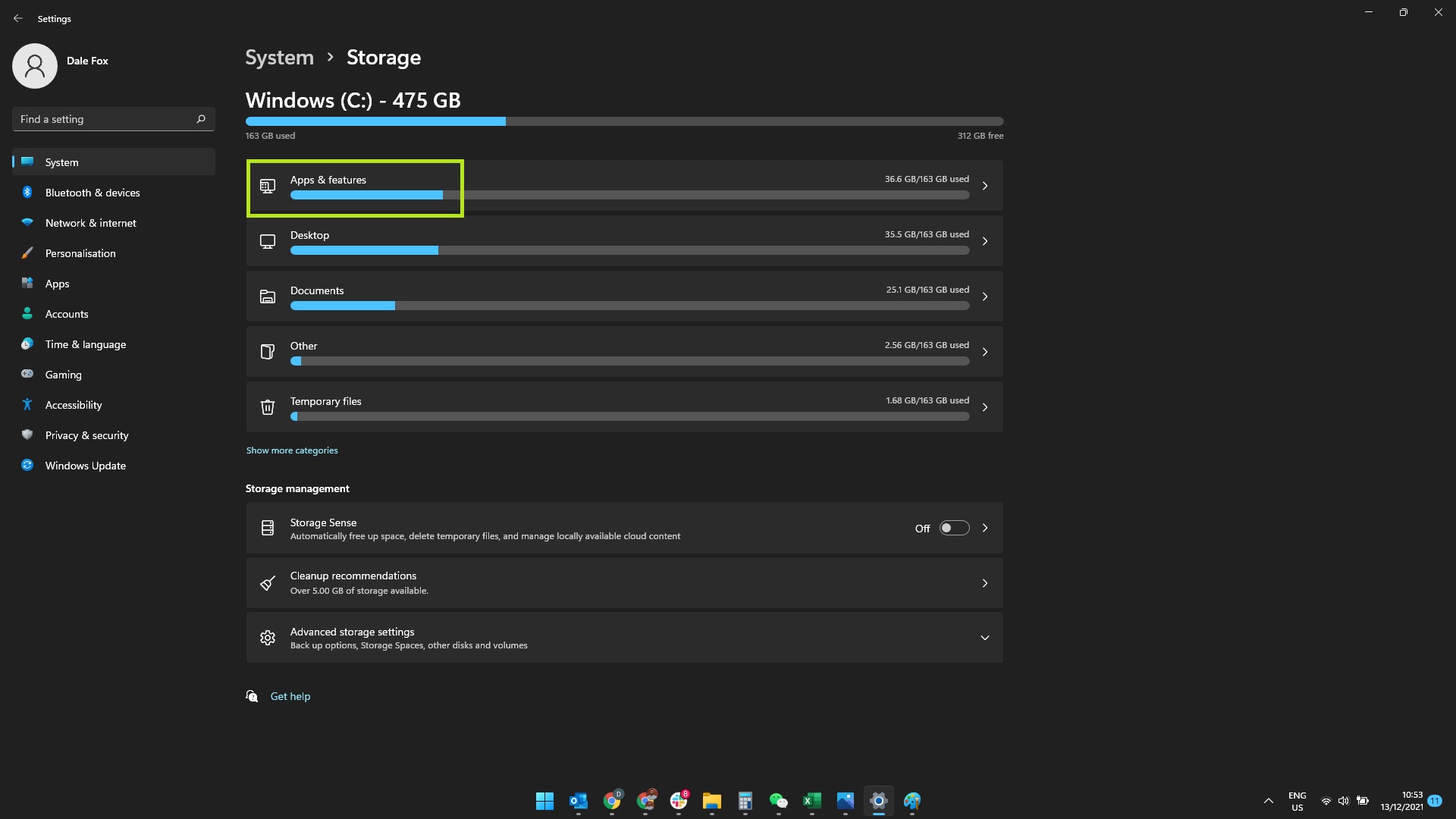
3. You'll now see an alphabetical list of every app installed on your computer. You can sort the list by clicking "Sort by" and choosing "Name," "Size," or "Installation date." It's a good idea to sort apps by size, so you can see which ones are taking up the most space.
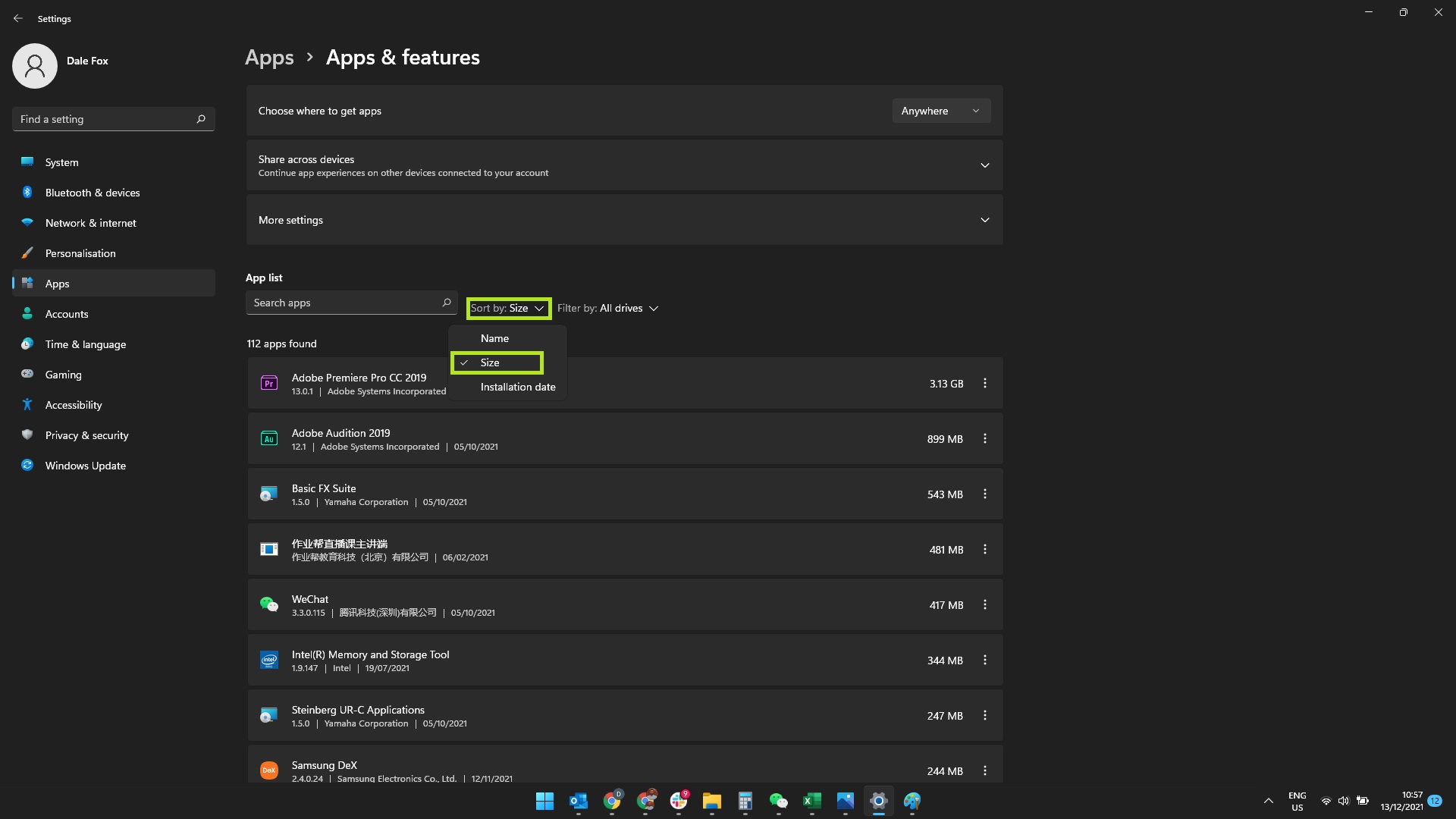
4. To uninstall an app, click the three dots to the right of its name, then click "Uninstall." Click "Uninstall" again after the prompt appears.

Depending on the type of app, you may have to follow further prompts to uninstall it fully.
How to speed up Windows 11: Disable visual effects
Windows 11 features a lot of fancy visual flourishes and animations when opening and closing menus or switching between apps. They look cool, but they can slow your computer down if your hardware's not up to the task. Thankfully, there's an easy way to switch them off. Here's how to disable visual effects in Windows 11.
1. Click the Windows icon on your taskbar (or press the Windows key on your keyboard) to open the Start menu. Type "visual" and click "Visual effects" once it appears.
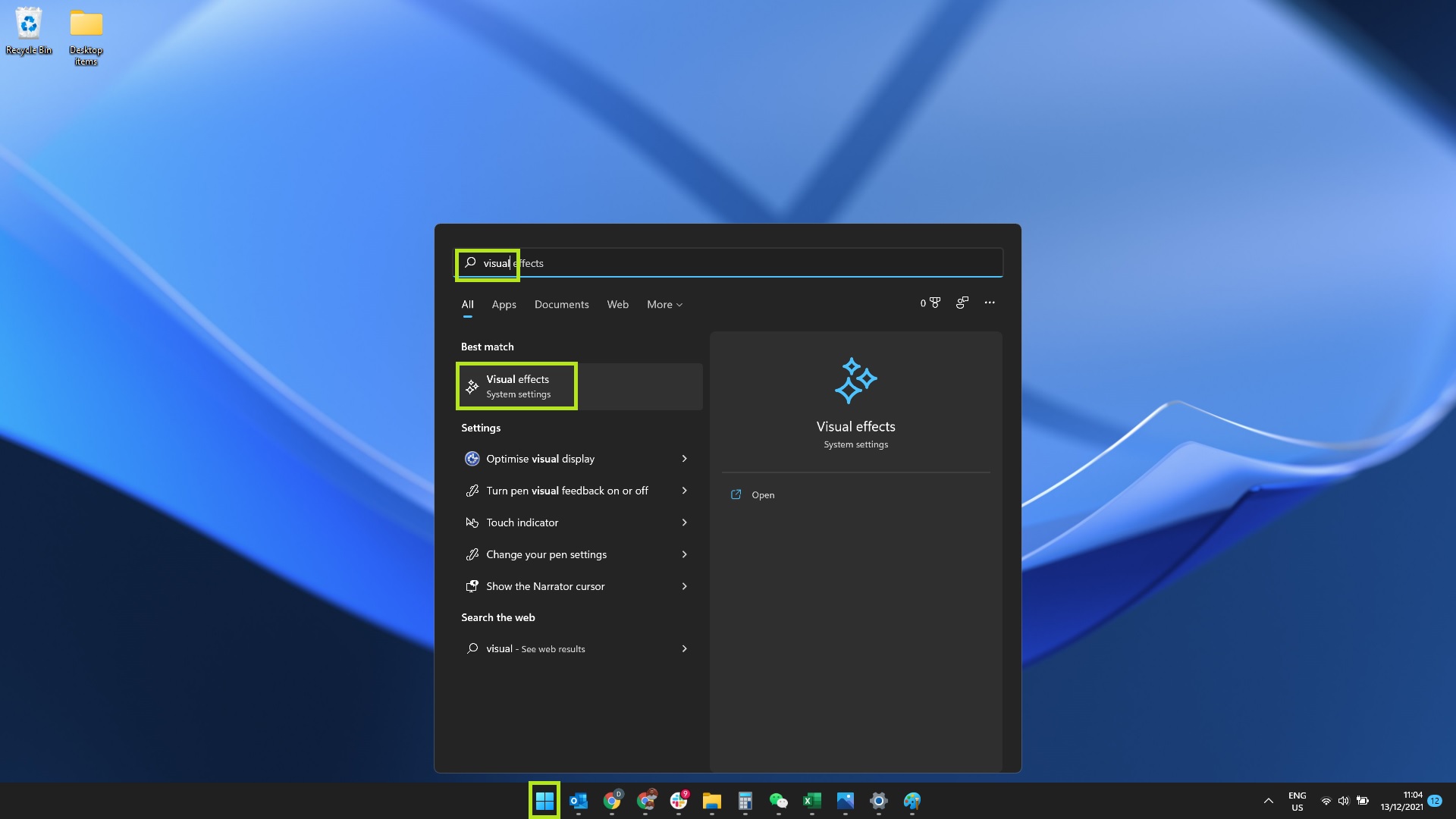
2. On the list of effects, if "Transparency effects" and "Animation effects" are set to "On," click the toggles next to them to set them to "Off."
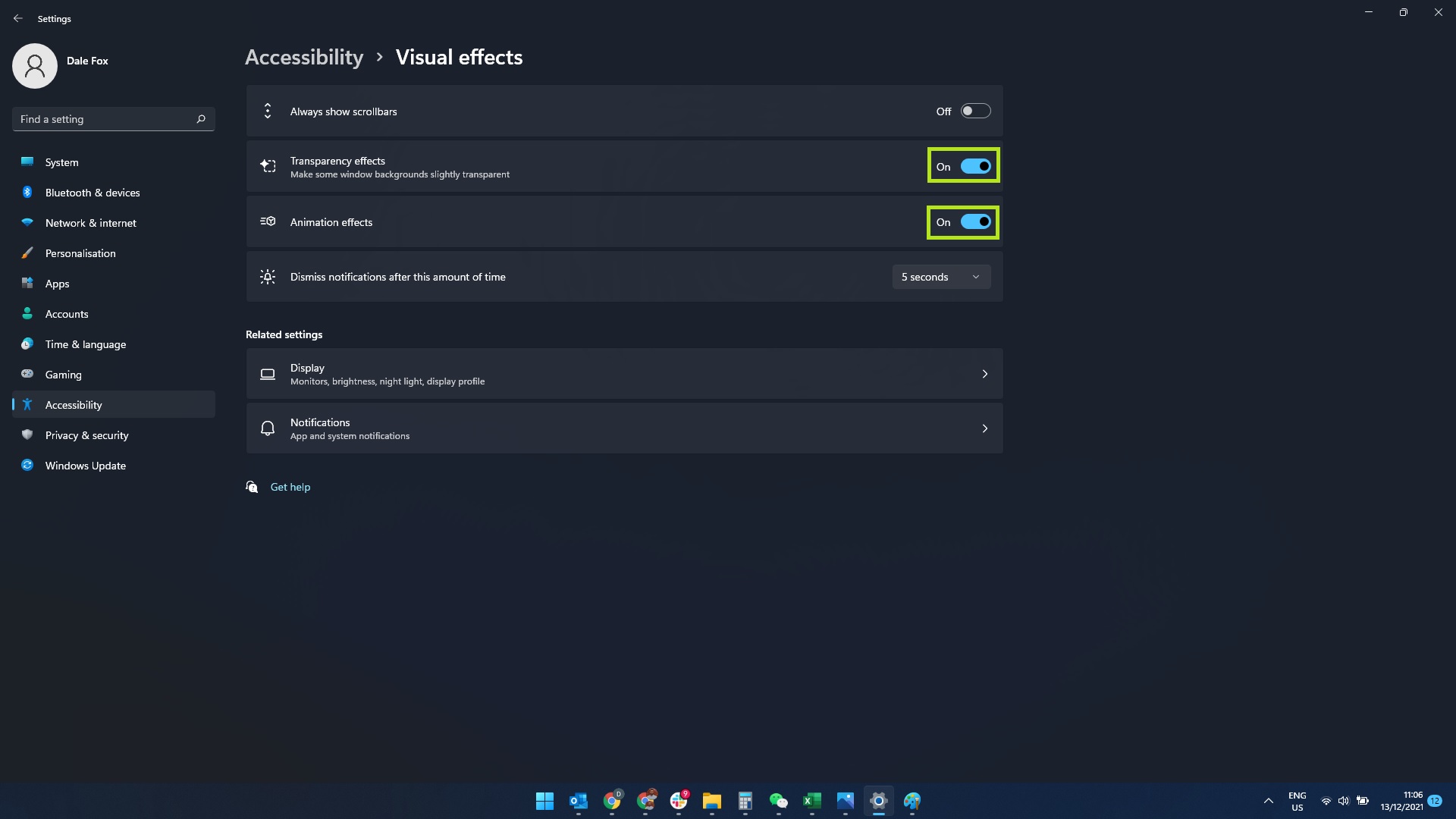
Do all — or even some — of the above and you should notice a nice speed boost for your Windows 11 PC or laptop.
How to speed up Windows 11: Add RAM or an SSD
We've focused solely on software tweaks in this tutorial, because hardware upgrades are a whole different ball game. But obviously they can help too, with the addition of extra RAM or a super-fast SSD among the most substantial upgrades you can make.
We'll be covering those topics in future Windows 11 tutorials, so check back regularly for more expert advice.
And in the meantime, you may also be interested in what we think are the 7 best new Windows 11 features, and in our guides on how to set up multiple desktops in Windows 11 and how to enable God Mode in Windows 11 or 10. If you work on the cloud often, read 11 Google Drive tips to save you time

Dale Fox is a freelance journalist based in the UK. He's been a tech nerd ever since childhood, when he used the money from his first job as a paperboy to buy a subscription to GamesMaster magazine. Dale was previously a presenter and editor in China, where he also worked as a copywriter for OnePlus at its Shenzhen HQ.
-
tom Pulu Has anyone had the two specific issues I have had since upgarding to 11. Restarted the pc and done most of the speedup referred to above .Reply
Issue 1. File explorer / manager "working on it" meesage opening a folder with two small files takes between 30 seconds and a minute with the infuriating message and then if you delete a file in the folder it repeats the Working on it!!!!!!!!!!!!!!
Issue 2. Opening ANY program can take up to 2 minutes.
I have nearly given up on Edge as a BROWSERas it it is just insipd cXXX, every function is unedifying and things like search engines "delete unwanted does not work.
